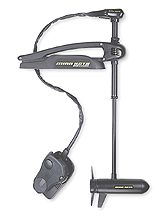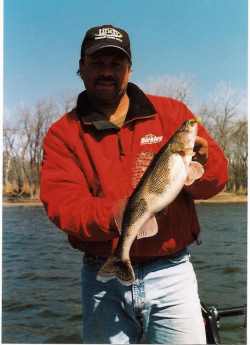
|
|||||||
|
Promotional Team Favorites Lodging food and more
|
By JOHN KOLINSKI John Kolinski is the 2002 Professional Walleye Trail Angler of the Year and a 12-time championship qualifier on the PWT, RCL, and Masters Walleye Circuit. His articles can be read in numerous Midwestern outdoor publications and several web sites. Kolinski is sponsored by Triton Boats, Mercury Motors, Lowrance Electronics, Normark/Storm Lures, MinnKota, Lindy Legendary Tackle, Flambeau, Tempress rod Holders, Off-Shore Planer Boards, Berkley Trilene, Optima Batteries and Panther Marine Rodney Dangerfield could relate to the humble sauger. Talk about a fish that gets no respect. Talk about a creature that prefers the shadows to the limelight. Talk about a species with an inferiority complex. In the eyes of many anglers, you're talking about that mottled, milky-eyed, lightweight cousin of the stately walleye. You're talking about a sauger. Of course, some of those things are true. Others are simply the attributes that make sauger an interesting and entertaining species to pursue as winter begins to recede across the northern part of the country. In fact, there are even some characteristics common to sauger that make them more attractive than walleyes. It's all in the eye of the beholder. On most Midwestern river systems, sauger are abundant, predictable and left alone by the masses of anglers who either prefer walleyes or don't know how to catch their more reclusive cousins. Best of all, sauger are extremely social fish. Where there's one, there are usually hundreds, and they're usually eating and having a fish's version of a good time. It brings to mind an old song by Kool and the Gang: "There's a party going on right here. A celebration to last throughout the years. So bring your good times and laughter, too. We're gonna celebrate your party with you." When you are sauger fishing, you are the guest of honor. When you get dialed in, there will be laughter coming from your boat. And once in awhile, you will take home memories that will last throughout the years. Seldom are sauger more accessible than they are during the pre-spawn period on Midwestern river and reservoir systems. In rivers, they congregate in the tailwaters below locks and dams. In reservoirs, they often pile up on large flats just above the dams. To catch them consistently, it's important to understand some of the basic differences between walleye and sauger. While they are remarkable similar in some respects and typically inhabit that same waters, each is also its own species with its own preferences in terms of habitat and location. In general, active walleyes roam the shallow flats - mostly during low light conditions and when the water is dirty -- in early spring. They can be caught in as little as 2-3 feet of water. Sauger spend most of their time in depths ranging from about 12 feet to 30 feet. Like walleyes, they will creep up the edges of the breaks to feed early and late in the day, but they quickly slip back to the depths. Biologists say they dynamics of a sauger's eye make them more light-sensitive than a walleye. That's whey they thrive in systems prone to turbidity. Once walleyes retreat to the depths, they can become tough to catch during the middle of the day. Since that's where sauger hang most of the time, anyway, they tend to bite any time of the day. Deep holes directly below a lock and dam are a prime place to find springtime sauger. They will stack up there in tremendous numbers. Other excellent holding spots are inside corners along the river channel. Current is essential. While walleyes don't mind cruising through some slack water or holding in an eddy in search of food, it seems like sauger prefer moving water. There are a number of productive ways to catch sauger from these spots.
or lime green. There are also some very successful anglers who do well with Jigging Rapalas. Springtime sauger will usually smack a jig with more purpose than a walleye, but it has to be fished within 3-4 inches of the bottom. A more aggressive jigging stroke might get their attention in slow-moving water, but it moves the jig too fast when there's much current. I've found short lift-and-drop movements followed by a pause at the bottom tends to elicit the most strikes.
walleye-sauger hybrid species that does grow to walleye-sized proportions. This spring when you're looking for some fast action or the walleyes aren't cooperating, get after those sauger. There's a party going on down there, and you're invited! E-mail John Kolinski Fish Clix Banner Exchange Please visit these site sponsors |
||||||
|---|---|---|---|---|---|---|---|

